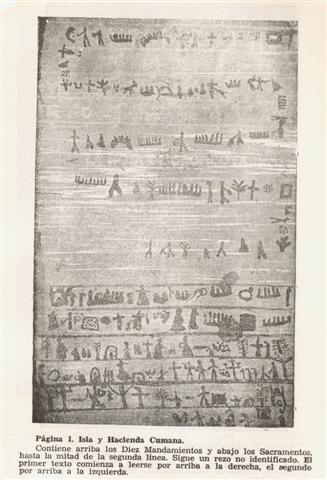| BOUSTROPHEDON WRITING 2 "Vestiges of a primitive script survived into early historic times in the Andean area around lake Titicaca. The first thorough study of this script was presented by Ibarra Grasso (1948), although several writers had previously commented on this curious picture-writing, and illustrated samples. Ibarra Grasso (Ibid., pp. 99-124) presents a rich material on this writing found both among post-Columbian Aymara and Quechua tribes, and in demonstrating the extra-European origin he draws a parallel with the Cuna writing system (Ibid., p. 117), and gives an example of this Andean script in boustrophedon. A stone tablet from the Andes with ideograms placed in two lines shows that the second line did not merely continue in boustrophedon fashion from the first, but it was in addition placed upside down as on the Easter Island tablets. Contrary to the Cuna writing system, but precisely as on Easter Island, this Andean inscription started in the left end of the lower line. The fact that this writing system is not readily thought of was demonstrated at a round-table conference in connection with the VII International Anthropologist Congress in Moscow in 1964, when Knorozov (1964 b, p. 4) pointed out that the system of reversed boustrophedon had been discovered only in two localities throughout the world: Easter Island and Peru." (Heyerdahl 4)
(Ibarra Grasso)
|
